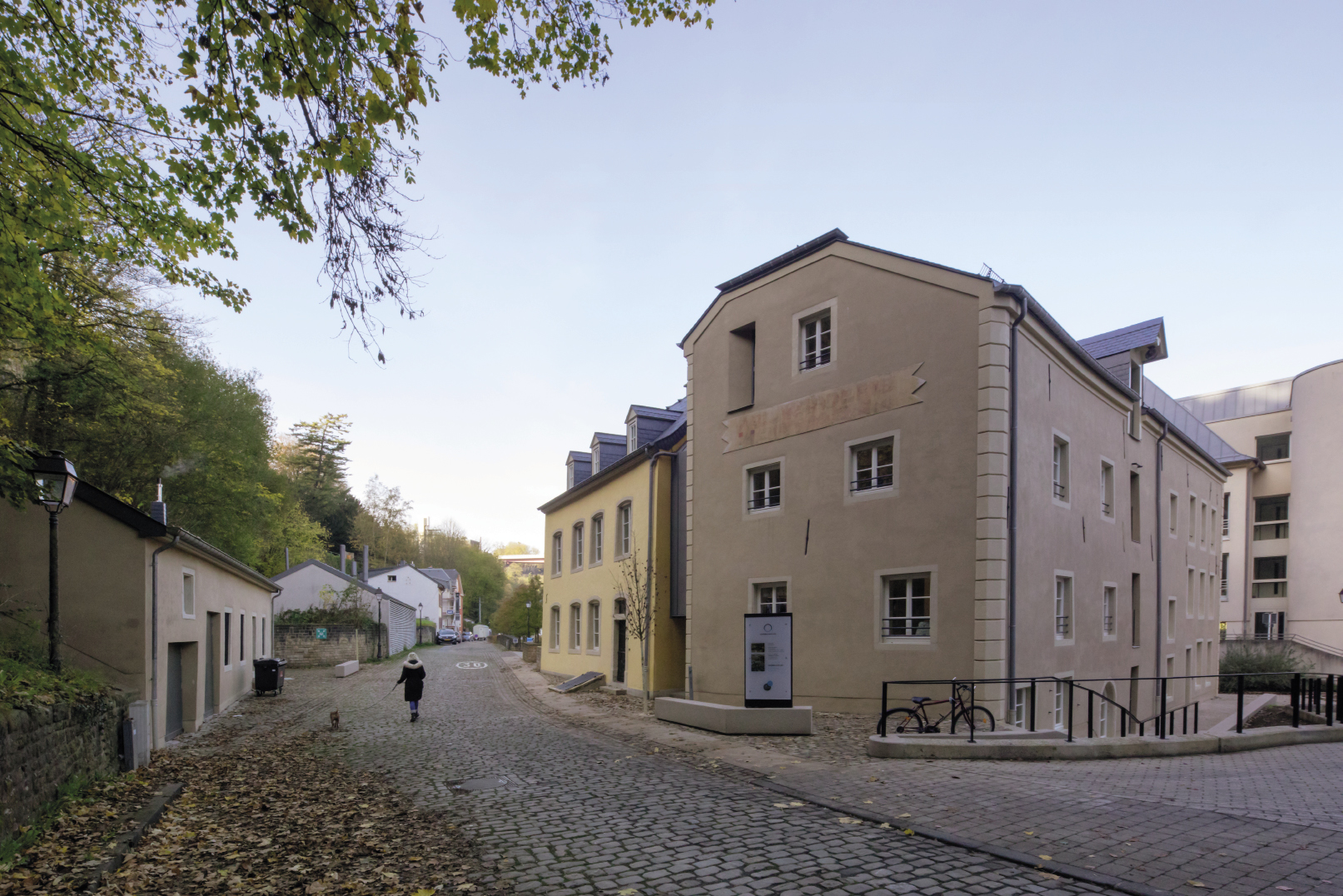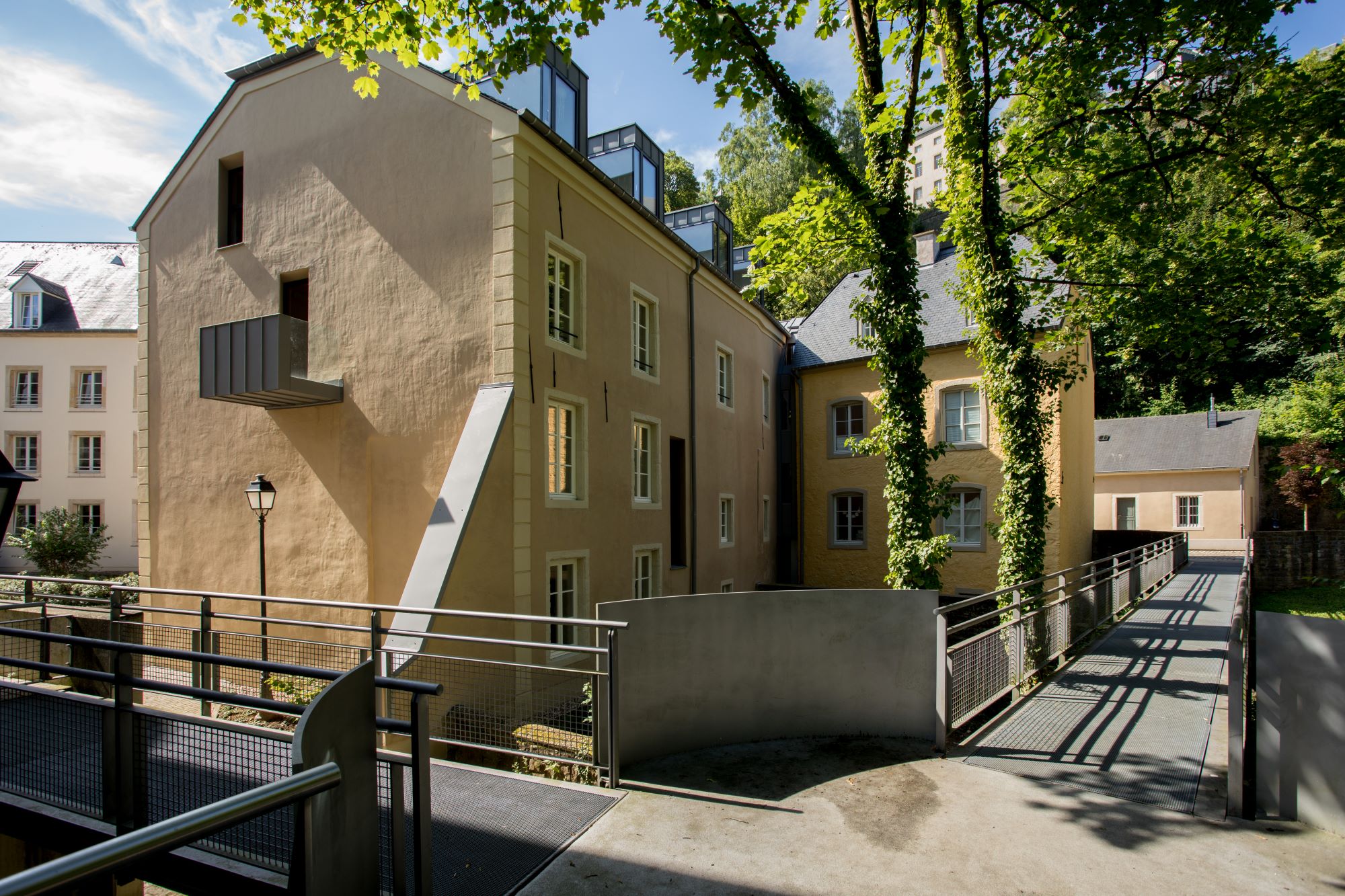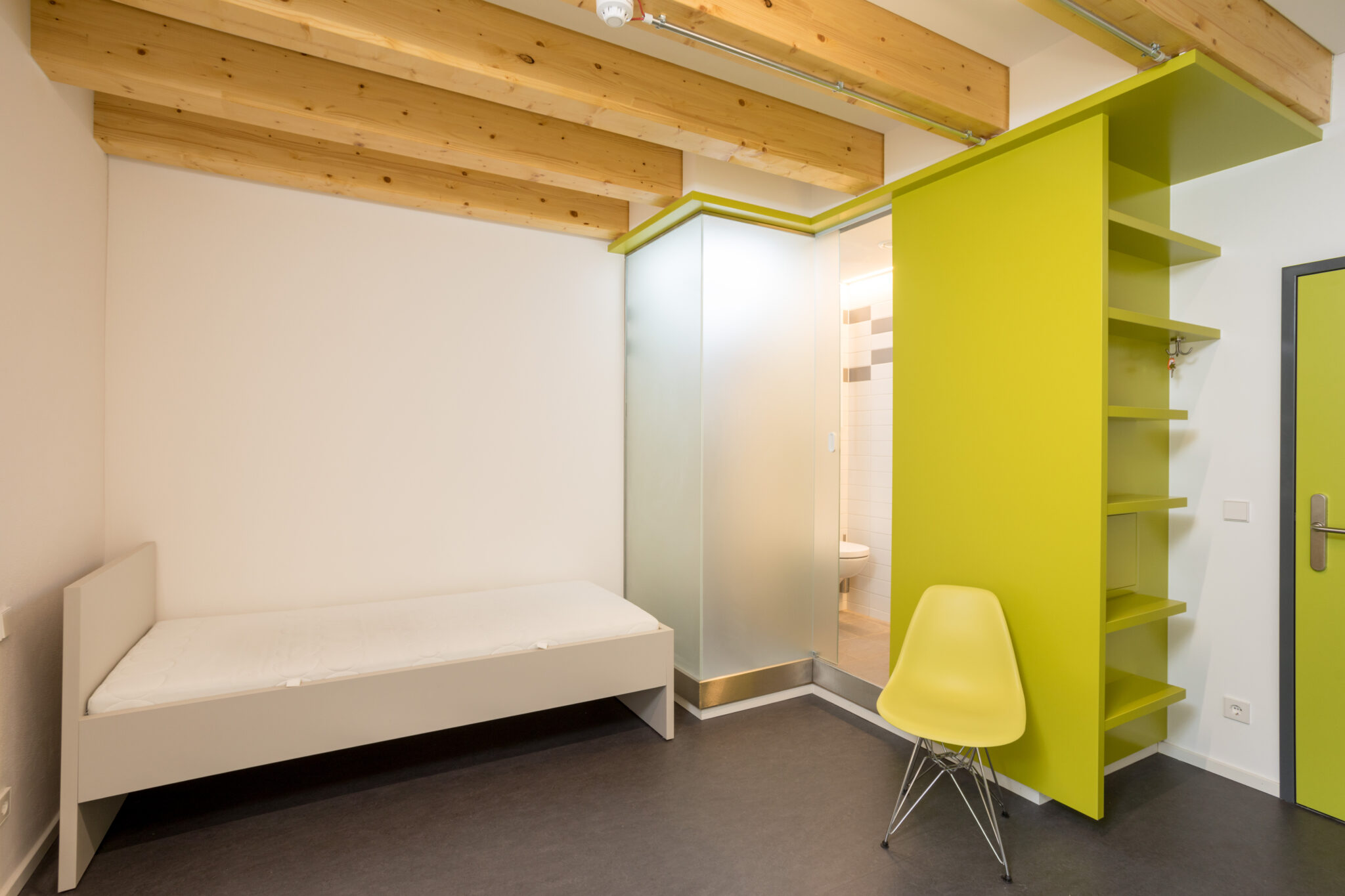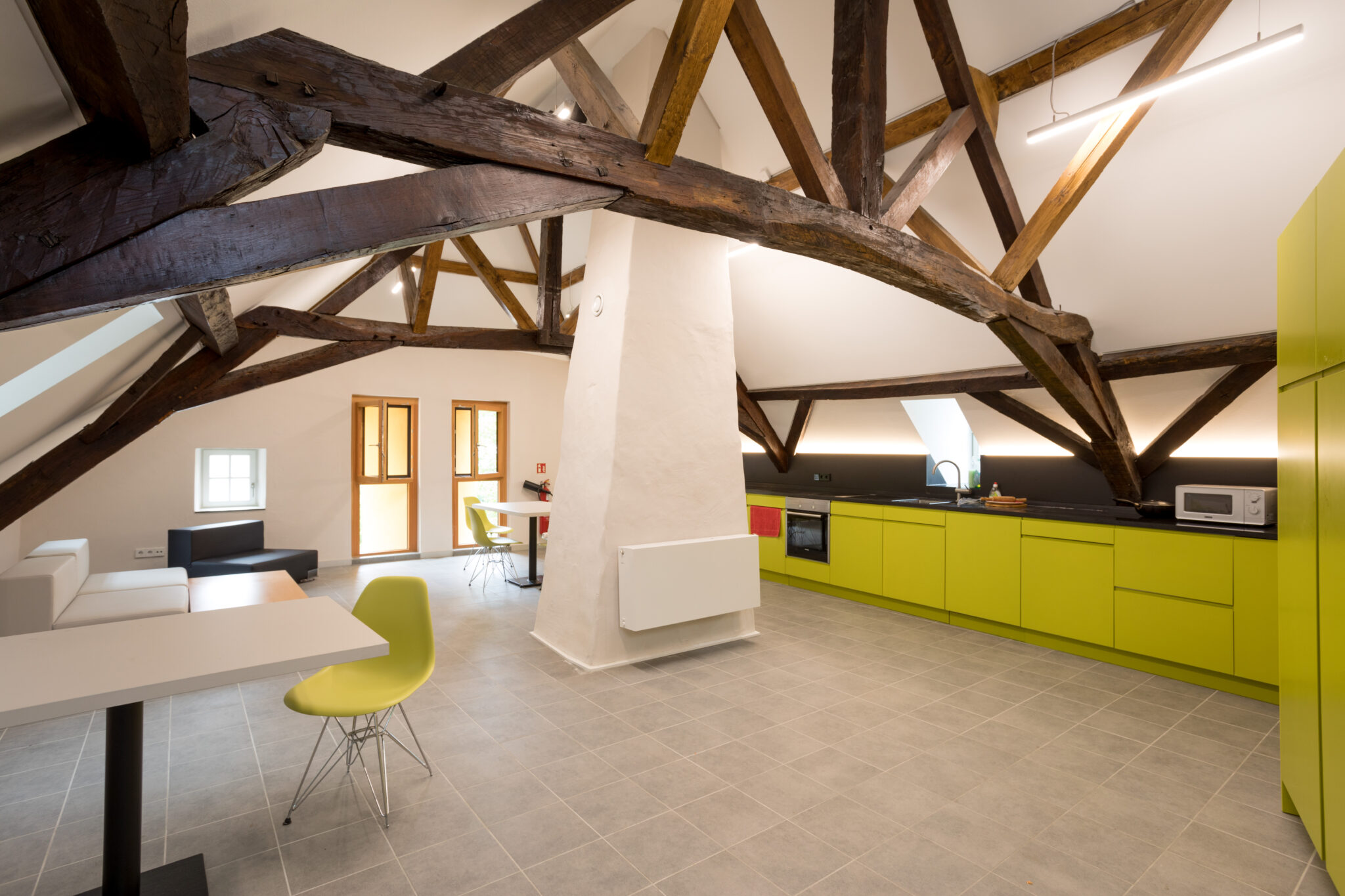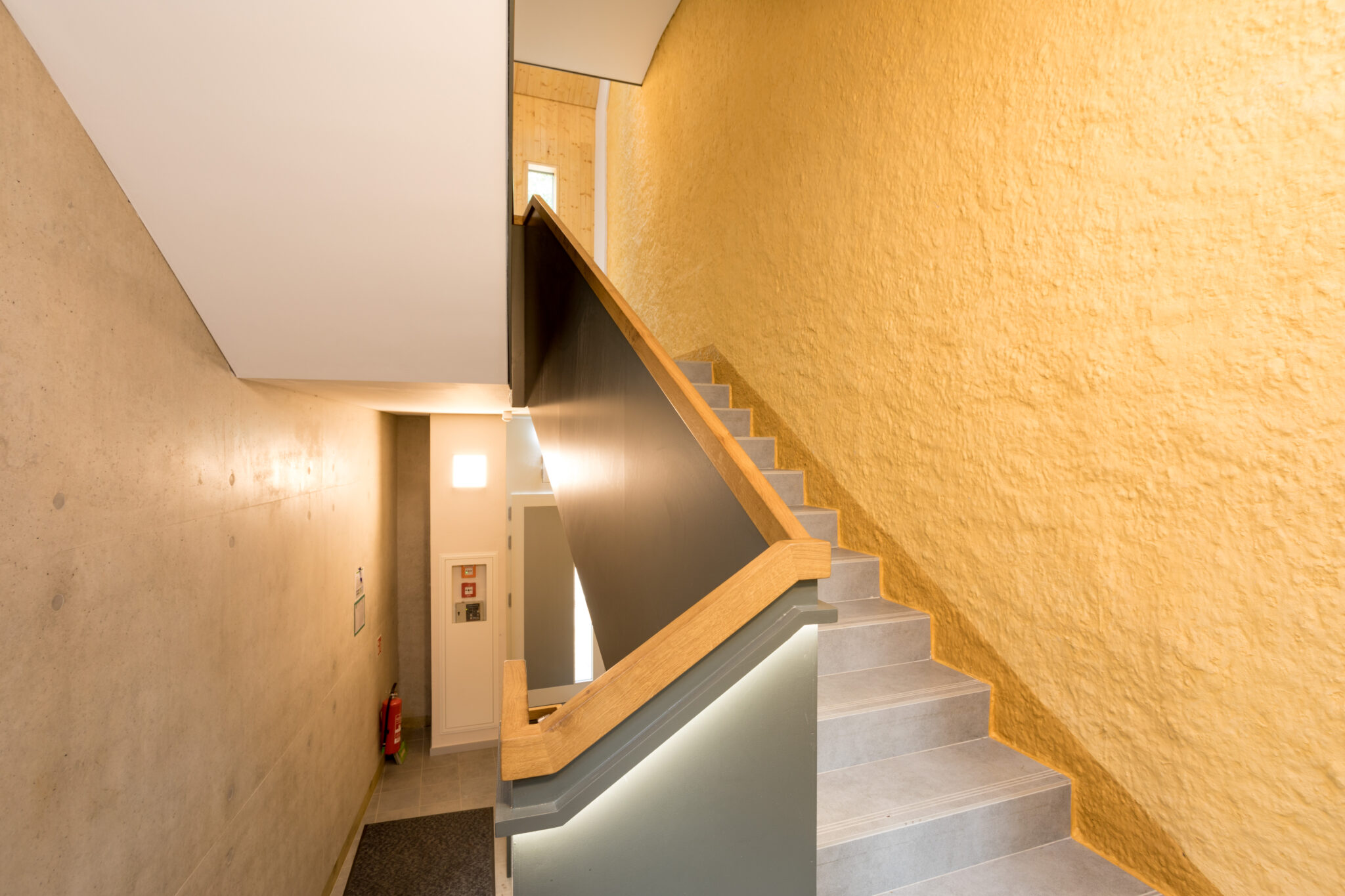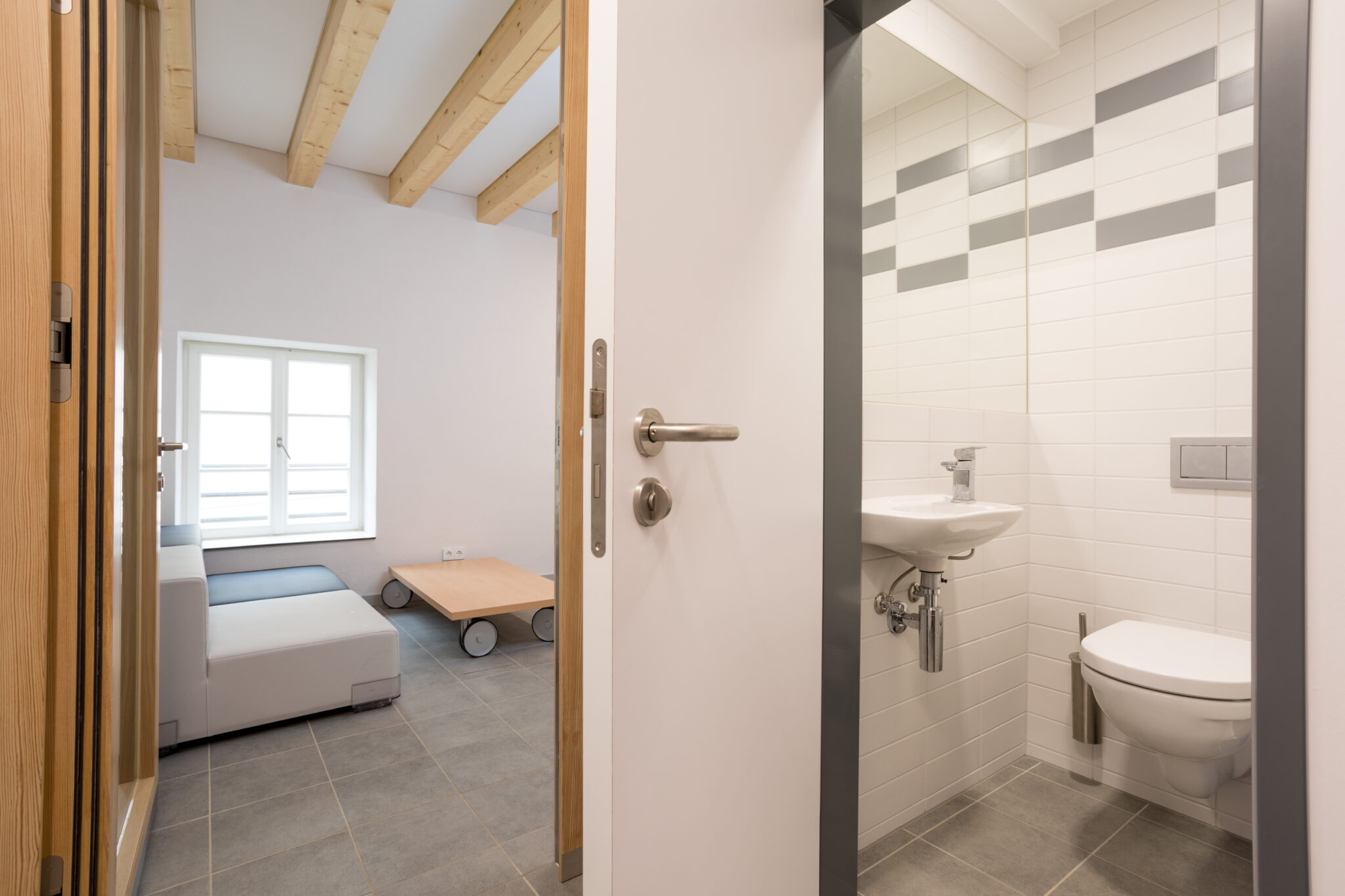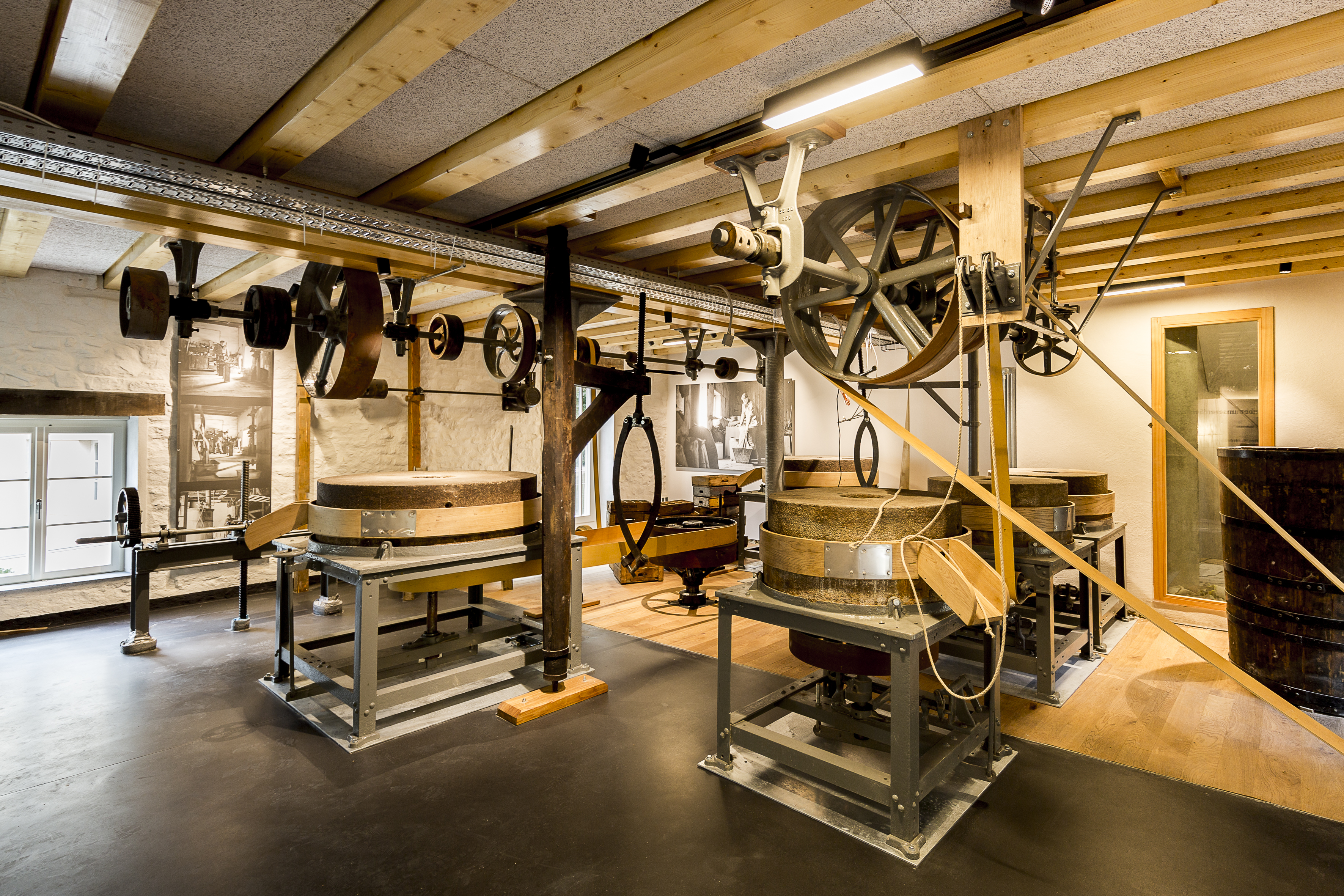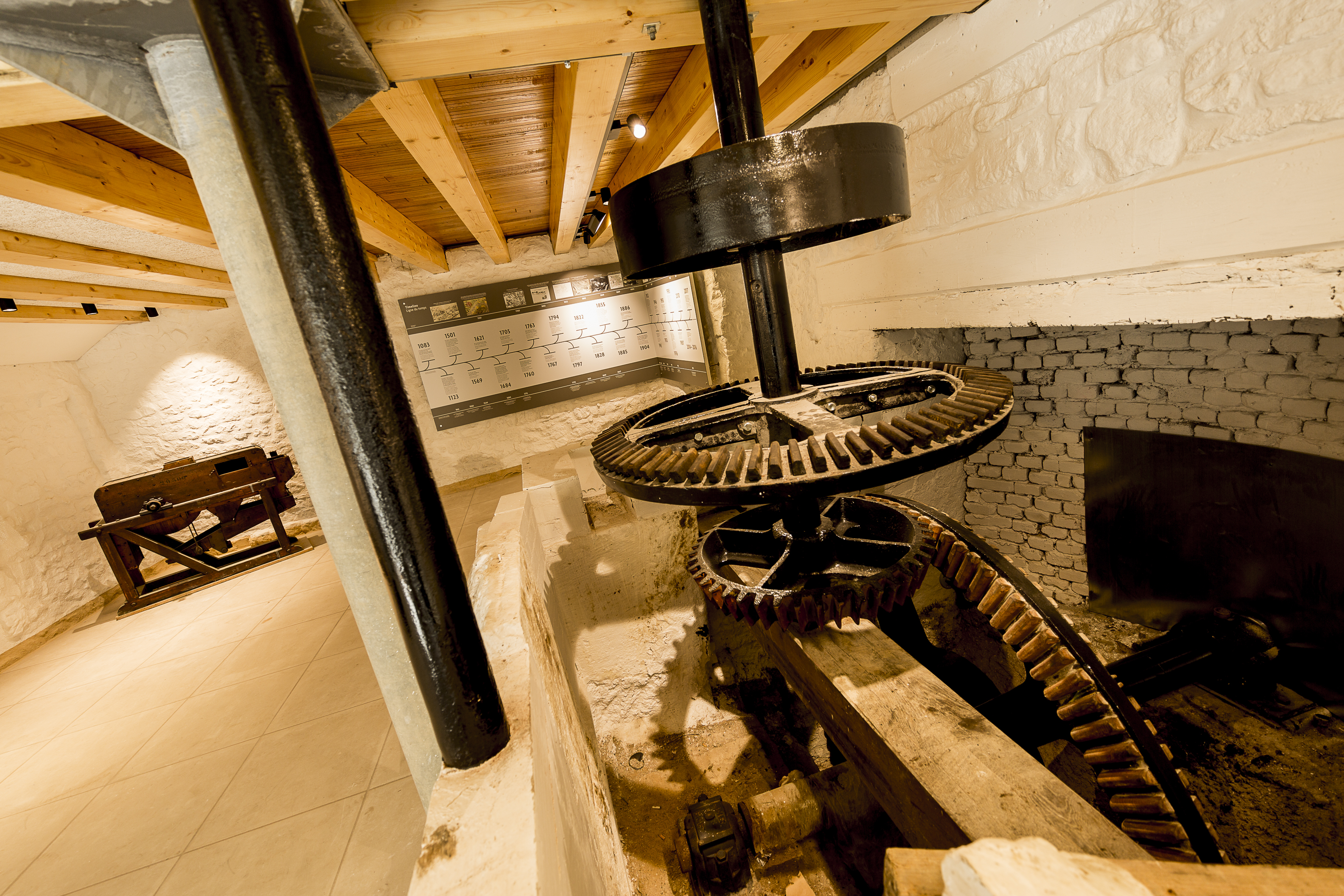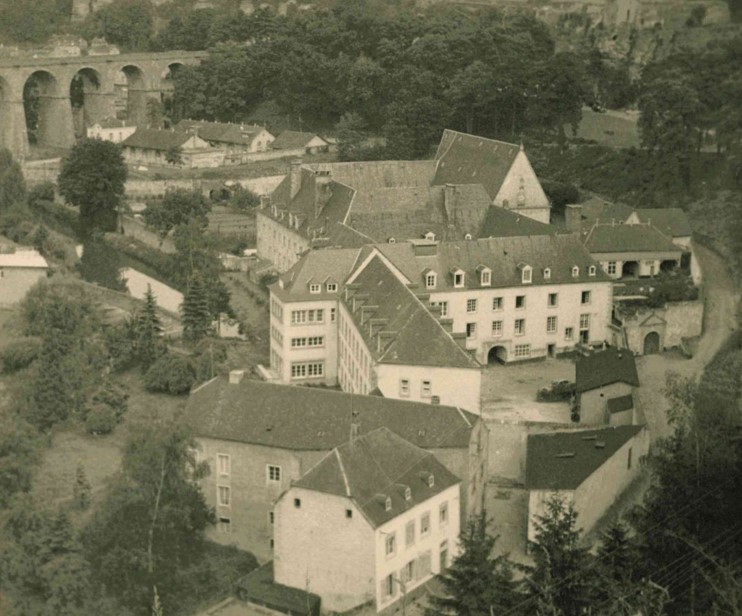Regaining a sense of belonging
Old Mustard Mill (Muerbelsmillen)
Transformation of the old mill Muerbelsmillen in Luxembourg-Pfaffenthal
The Muerbelsmillen project involves the conversion of the old mill known as the Muerbelsmillen
(former Moschterfabrick) by refurbishing and converting the former mustard factory at 67-69, rue Mohrfels. It comprises three separate buildings:
the mill itself, the "Flohr" residential building and the outbuilding.
(former Moschterfabrick) by refurbishing and converting the former mustard factory at 67-69, rue Mohrfels. It comprises three separate buildings:
the mill itself, the "Flohr" residential building and the outbuilding.
Luxembourg
Local
Luxembourg City
It addresses urban-rural linkages
It refers to a physical transformation of the built environment (hard investment)
Yes
2017-09-26
No
No
Yes
Yes
Yes
As a representative of an organisation
The old mustard mill project involves the conversion of the Muerbelsmillen mill through the restoration and transformation of the old mustard factory located at 67-69 Mohrfels Street. It includes three distinct buildings: the mill itself, the residential house, and the outbuilding.
The three buildings have been transformed to accommodate student housing, a workspace and documentation area, as well as to highlight the preserved and renovated mill surrounded by a historical exhibition and a discovery space.
The overall goal is to preserve the industrial heritage of the building while creating spaces for local and regional communities. The target group includes local residents, artists, cultural enthusiasts, and visitors from all over Europe who wish to experience a fusion of history, art, and innovation.
The specific objectives are to:
• Restore the old mustard factory while preserving its architectural authenticity.
• Offer a space for cultural events, exhibitions, and public discussions.
• Strengthen the work of local communities and the neighbourhood interest association.
The outcomes of the project include:
• A fully restored and energy-efficient mustard factory serving as a cultural and meeting place.
• Increased local and international interest in sustainable development and cultural heritage.
• Strengthened community ties through inclusive programs and events (school participation).
• A diverse target audience includes neighbourhood associations, schools and educational activities, as well as accommodations for students and university professors.
The three buildings have been transformed to accommodate student housing, a workspace and documentation area, as well as to highlight the preserved and renovated mill surrounded by a historical exhibition and a discovery space.
The overall goal is to preserve the industrial heritage of the building while creating spaces for local and regional communities. The target group includes local residents, artists, cultural enthusiasts, and visitors from all over Europe who wish to experience a fusion of history, art, and innovation.
The specific objectives are to:
• Restore the old mustard factory while preserving its architectural authenticity.
• Offer a space for cultural events, exhibitions, and public discussions.
• Strengthen the work of local communities and the neighbourhood interest association.
The outcomes of the project include:
• A fully restored and energy-efficient mustard factory serving as a cultural and meeting place.
• Increased local and international interest in sustainable development and cultural heritage.
• Strengthened community ties through inclusive programs and events (school participation).
• A diverse target audience includes neighbourhood associations, schools and educational activities, as well as accommodations for students and university professors.
Temporary student housing
Heritage preservation and reconversion
Innovation
Community Engagement
Cultural Development
Sustainability: The project focuses on using eco-friendly building materials and sustainable practices in the renovation process. By choosing local materials and sustainable production methods, the project serves as a model for environmentally conscious development.
Inclusion: The project fosters inclusivity by ensuring that the renovated mustard factory is accessible to all. The space is designed with universal access in mind and other accommodations for people with disabilities. Admission is affordable, with programs and events catering to a wide variety of audiences, including marginalized groups.
Aesthetics & Quality of Experience: In terms of aesthetics, the project blends modern, sustainable design with the historical industrial architecture of the mustard factory. The goal is to create an inspiring, functional space that fosters creativity and reflection. A balance between preserving the building’s heritage and introducing modern, comfortable design elements has been achieved, ensuring an enriching experience for visitors and users. This approach enhances the cultural landscape, offering a space where people can engage with art, history, and sustainable design in a meaningful way.
Inclusion: The project fosters inclusivity by ensuring that the renovated mustard factory is accessible to all. The space is designed with universal access in mind and other accommodations for people with disabilities. Admission is affordable, with programs and events catering to a wide variety of audiences, including marginalized groups.
Aesthetics & Quality of Experience: In terms of aesthetics, the project blends modern, sustainable design with the historical industrial architecture of the mustard factory. The goal is to create an inspiring, functional space that fosters creativity and reflection. A balance between preserving the building’s heritage and introducing modern, comfortable design elements has been achieved, ensuring an enriching experience for visitors and users. This approach enhances the cultural landscape, offering a space where people can engage with art, history, and sustainable design in a meaningful way.
The key objectives of the project, in terms of aesthetics and quality of experience for people, revolve around blending historical preservation with modern utility, creating a space that respects its cultural heritage while providing an enriching experience for its users.
Aesthetic Objectives Preservation and Enhancement of Historical Architecture:
The project emphasizes the preservation of the architectural integrity of the buildings, particularly those listed in the national inventory (Buildings A and B). These structures are maintained in a way that showcases their historical value while ensuring their functionality for modern use. The presence of the old Mill in Building B not only maintains the industrial heritage of the site but also incorporates it into the design in a way that visitors can experience and engage with the past.
Quality of Experience for People:
The buildings, particularly with the conversion into student housing, provide modern amenities while preserving historical elements. This dual use of the space (living and educational) allows for a harmonious interaction between past and present.
The inclusion of educational rooms related to the Mill creates a space for cultural learning, enriching the visitor's experience. These educational facilities make the project a living museum, blending historical information with hands-on experience.
Aesthetic Objectives Preservation and Enhancement of Historical Architecture:
The project emphasizes the preservation of the architectural integrity of the buildings, particularly those listed in the national inventory (Buildings A and B). These structures are maintained in a way that showcases their historical value while ensuring their functionality for modern use. The presence of the old Mill in Building B not only maintains the industrial heritage of the site but also incorporates it into the design in a way that visitors can experience and engage with the past.
Quality of Experience for People:
The buildings, particularly with the conversion into student housing, provide modern amenities while preserving historical elements. This dual use of the space (living and educational) allows for a harmonious interaction between past and present.
The inclusion of educational rooms related to the Mill creates a space for cultural learning, enriching the visitor's experience. These educational facilities make the project a living museum, blending historical information with hands-on experience.
The project provides for various dimensions of social inclusion. In terms of its purpose, it is meant to provide affordable accommodation for foreign students studying in Luxembourg, while also serving as a museum which is free of charge for any visitor. From an accessibility point of view, the museum incorporates best practice design features meant to ensure that all are able to access and use the facilities, including persons with disabilities and reduced mobility.
Citizen Involvement & Impact: The project was born from the will of the local community (Neighbourhood Interest Association of Pfaffenthal). The local community has been not only active but also a driving force behind the project, contributing to its success by guiding the planners' decisions. The involvement of citizens has fostered a sense of ownership, which is essential for the long-term success of the project.
Stakeholder Engagement: Various stakeholders, including local authorities, cultural institutions, have played an integral role in the design and implementation of the project. Local authorities provided financial support, while cultural institutions helped shape the artistic programming. The collaboration of these diverse stakeholders has enriched the project, ensuring its success at multiple levels.
Interdisciplinary Collaboration: The project brought together architects, engineers, archaeologists, the City Museum of Luxembourg, the City of Luxembourg services, scenographers, the National Heritage Sites and Monuments of Luxembourg service, artists, and cultural practitioners and many others. The synergy between these different fields enhanced the project’s impact, as each discipline contributed unique knowledge to the process.
The combination of an old renovated mill and student housing brought together two distinct ideas in a way that are both innovative and functional.
Heritage Preservation: The mill is a historic building, likely with a lot of character and unique architectural details that was preserved during renovation. This contrasts the typical, cookie-cutter designs of modern buildings, making it special for both residents and visitors.
Sustainability: Renovating an existing building, rather than demolishing it, is a sustainable choice. It repurposes materials and avoids the environmental impact of new construction, making it an eco-friendly option.
Adaptive Reuse and Functionality: Mills were once designed for industrial use, with open spaces and regular window openings, which can be creatively adapted to student housing. The volumes were reimagined as dormitories or communal areas, promoting a sense of community.
Mixed Spaces: The structure is combining private student accommodations with communal spaces, such as study rooms, common lounges, making it a hub for social interaction, creativity, and collaboration.
In conclusion, the innovative character of this combination lies in its ability to transform an old, industrial building into a modern, student-friendly environment while respecting its historical value. The project would marry the past with the future, blending sustainable practices with contemporary needs, fostering community, creativity, and a connection to both heritage and progress.
Heritage Preservation: The mill is a historic building, likely with a lot of character and unique architectural details that was preserved during renovation. This contrasts the typical, cookie-cutter designs of modern buildings, making it special for both residents and visitors.
Sustainability: Renovating an existing building, rather than demolishing it, is a sustainable choice. It repurposes materials and avoids the environmental impact of new construction, making it an eco-friendly option.
Adaptive Reuse and Functionality: Mills were once designed for industrial use, with open spaces and regular window openings, which can be creatively adapted to student housing. The volumes were reimagined as dormitories or communal areas, promoting a sense of community.
Mixed Spaces: The structure is combining private student accommodations with communal spaces, such as study rooms, common lounges, making it a hub for social interaction, creativity, and collaboration.
In conclusion, the innovative character of this combination lies in its ability to transform an old, industrial building into a modern, student-friendly environment while respecting its historical value. The project would marry the past with the future, blending sustainable practices with contemporary needs, fostering community, creativity, and a connection to both heritage and progress.
The key point was an approach of citizen involvement & impact that played a critical role in successfully implementing the project in several ways.
Citizens often have valuable local knowledge and insights that can help shape the project to better fit the needs of the community. By involving them in the planning process, the project can be more tailored to their concerns and preferences, which can increase its effectiveness. When citizens are actively involved, they feel a sense of ownership and responsibility for the project. This can build trust in the process and the authorities or organizations leading the project, which is crucial for its long-term success.Citizens can act as ambassadors for the project, helping to advocate for it within the community and beyond. Their enthusiasm and endorsement can attract further attention, resources, or partnerships needed for the project’s success.
In short, citizen involvement helped to ensure that the project became relevant, accepted, and sustainable by fostering collaboration, enhancing transparency, and tapping into local resources and expertise.
Citizens often have valuable local knowledge and insights that can help shape the project to better fit the needs of the community. By involving them in the planning process, the project can be more tailored to their concerns and preferences, which can increase its effectiveness. When citizens are actively involved, they feel a sense of ownership and responsibility for the project. This can build trust in the process and the authorities or organizations leading the project, which is crucial for its long-term success.Citizens can act as ambassadors for the project, helping to advocate for it within the community and beyond. Their enthusiasm and endorsement can attract further attention, resources, or partnerships needed for the project’s success.
In short, citizen involvement helped to ensure that the project became relevant, accepted, and sustainable by fostering collaboration, enhancing transparency, and tapping into local resources and expertise.
The project includes various elements and concepts which could be replicated elsewhere, including the idea to combine the renovation of a cultural landmark for the purpose of addressing a current social need with a global outlook. In this case, to address the need for affordable housing for foreign students wishing to study in Luxembourg. In addition, the renovation was executed with sustainable materials, which have contributed to the greening of the original mill building.
Like many capitals worldwide, Luxembourg City faces a shortage of housing, and in particular social and student housing. The project has a dual social and cultural purpose, and helps provide sustainable student accommodation in a cultural heritage landmark, which has also partly been transformed into a museum.
The project has contributed to preserving and repurposing a cultural landmark in a sustainable way which meets the needs of Luxembourg City's inhabitants. It has provided 15 new affordable student accommodations in the historic neighbourhood of Pfaffenthal, which is part of Luxembourg City's old quarters classified under UNESCO as a World Heritage Site. In addition, as the mill also partly serves as a museum and provides a venue for local events, it benefits tourism and the strengthening of local community ties.

